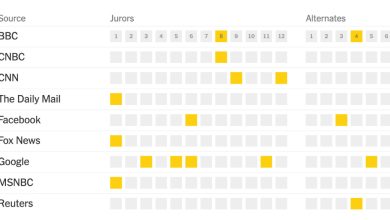A Times correspondent returning from South Africa got caught up in the chaotic response to Omicron.

HALIFAX, Nova Scotia — In early November, I flew to southern Africa to report a series of stories about the state of the Covid-19 pandemic in the region. My last afternoon there, South African scientists announced the discovery of the Omicron variant. Hours later, I got on a plane in Johannesburg to head home to Canada.
By the time I landed for my connection in Amsterdam on the morning of Nov. 26, the world had gone into full panic mode and I was swept up in a chaotic, at times frightening, tangle of orders and conflicting rules that seemed driven more by fear than medical science.
My firsthand journey through Covid response measures has shown me that, two years into this, we have yet to learn how to anticipate how both viruses and people will behave, or how to plan accordingly. We are going to need to get much better at both if we are to get through the next pandemic with less loss of life and less suffering.
When my plane touched down, a flight attendant informed us that passengers would need to be tested for the coronavirus before we could continue our journeys. Five hours later, we were still on the tarmac, the plane sealed up tight, with more and more travelers shedding their masks. The pilot said he could not procure food and drink for us because the airport authorities “would not permit” catering trucks to approach the plane.
We were eventually bused into an unused departure area and given virus tests. Hours ticked by in the stuffy room. Many gave up even a pretense of masking. The authorities made no attempt to stop them. I learned from a Dutch colleague that the health ministry had reported that 15 people had tested positive out of 110 on my flight and a second plane from Cape Town that arrived at the same time — an infection rate of 14 percent.
I looked around the room full of people, many shouting men and wailing toddlers, and began quietly to panic. Finally at 3 a.m., a couple of weary-looking public health staff members packed us into a line, had us hold up our passports, one by one, and read the results from a database. My test was negative, and I signed a document in Dutch promising that I had somewhere to quarantine at home, and that I would leave the country to go there.
That pledge seemed like a bad idea for public health, but I’d been awake for 42 hours, so I signed and handed it over. I spent another nine hours in an increasingly frantic search for someone who could help me gain access to a copy of my putative negative test. Finally, at the 11th hour, I got the test results and flew to Toronto.
There, I identified myself to a border agent as having flown from Johannesburg, and he waved me into a special line. A public health screener took my name, address and temperature — then sent me on my way.
“I was just held in detention for almost a day with people we know have Omicron,” I said, almost pleading. “You want to quarantine me!”
She shrugged. “I think you should go get your connection, and maybe quarantine yourself at home. Get tested on Day 4. I have no other guidelines for you.” This was the first of what would be days of conflicting, confusing messages from health authorities that left me struggling to figure out how best to keep people safe.




